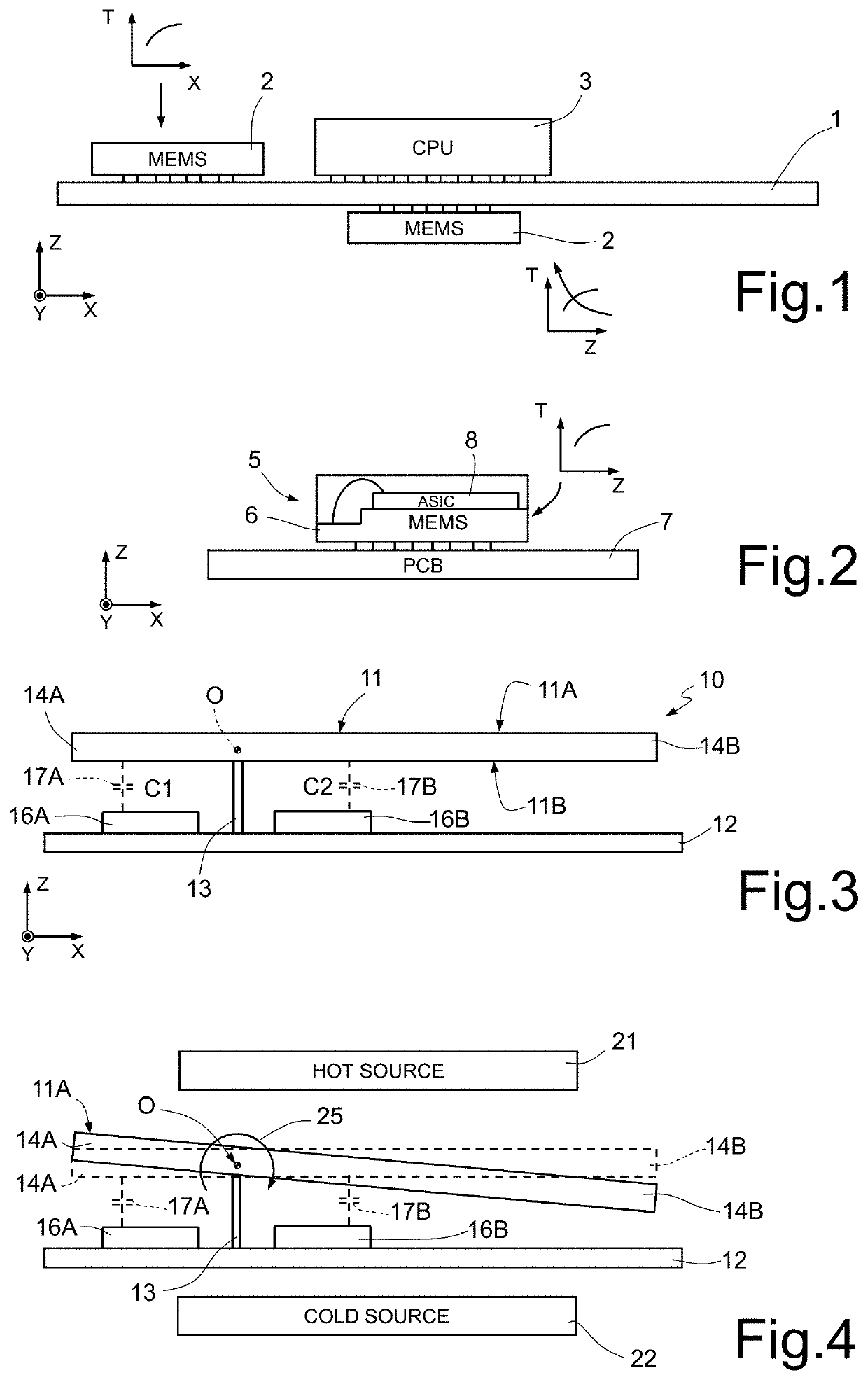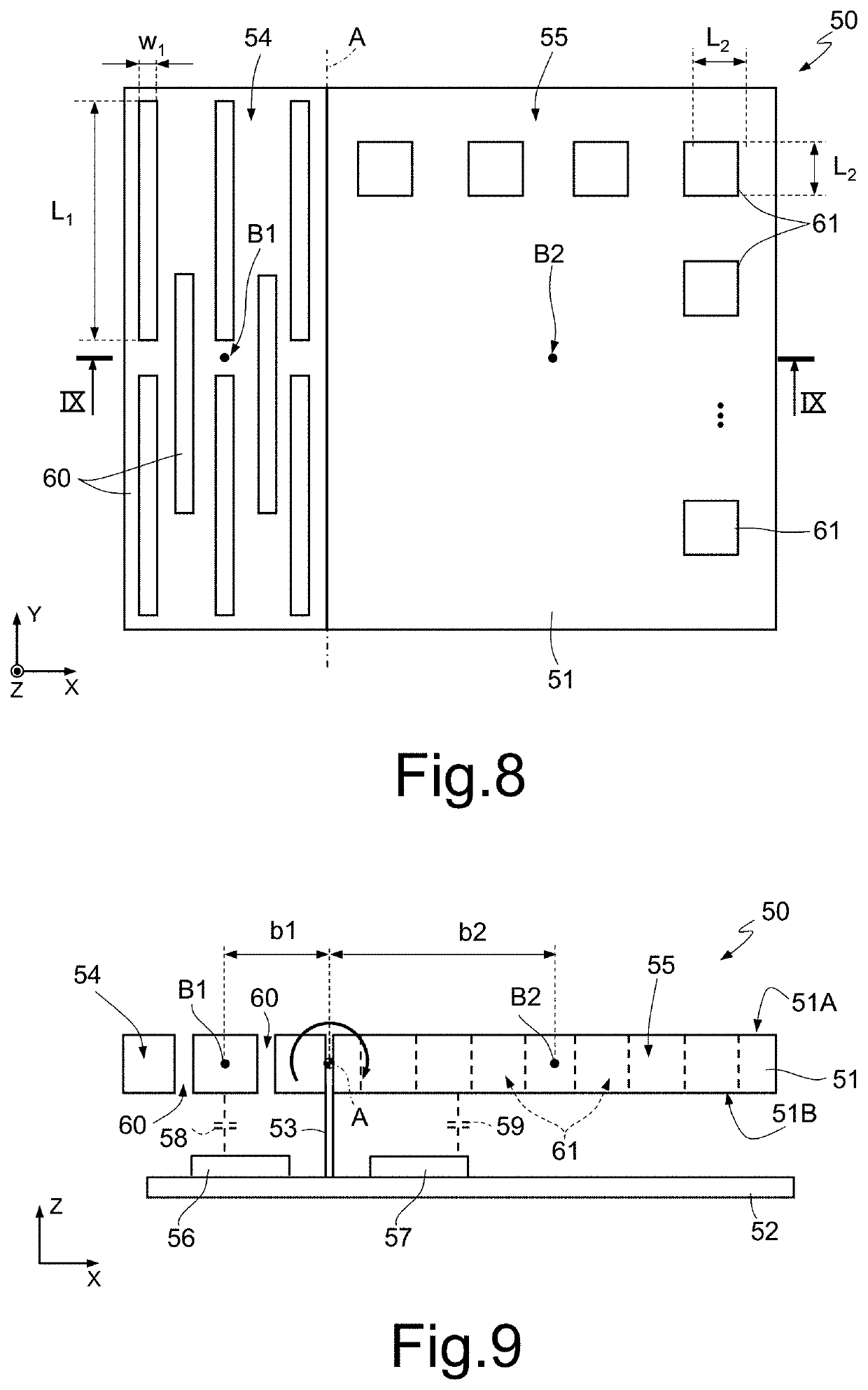MEMS device with optimized geometry for reducing the offset due to the radiometric effect
- Summary
- Abstract
- Description
- Claims
- Application Information
AI Technical Summary
Benefits of technology
Problems solved by technology
Method used
Image
Examples
Embodiment Construction
[0047]FIGS. 8 and 9 are schematic illustrations of a sensor 50 of an inertial type having a so-called “teeter-totter” structure.
[0048]In detail, the sensor 50 comprises a mobile mass 51 suspended over a substrate 52 (FIG. 9) through a pillar 53, which extends from the substrate 52 parallel to axis Z of a Cartesian reference system XYZ. The pillar 53 is coupled to the mobile mass 51 through hinges and springs (not shown), which enable tilting of the mobile mass 51 about a rotation axis A.
[0049]The mobile mass 51 has a characteristic quantity (here the length in direction X) much greater than its thickness, for example ten times greater. In particular, at rest, the mobile mass 51 has main surfaces (top surface 51A and bottom surface 51B) extending in a plane parallel to plane XY of the Cartesian reference system XYZ and a thickness tp extending parallel to axis Z. The thickness tp of the mobile mass 51 is uniform over its entire area, as may be seen in FIG. 9. In the shown example, th...
PUM
 Login to View More
Login to View More Abstract
Description
Claims
Application Information
 Login to View More
Login to View More - R&D
- Intellectual Property
- Life Sciences
- Materials
- Tech Scout
- Unparalleled Data Quality
- Higher Quality Content
- 60% Fewer Hallucinations
Browse by: Latest US Patents, China's latest patents, Technical Efficacy Thesaurus, Application Domain, Technology Topic, Popular Technical Reports.
© 2025 PatSnap. All rights reserved.Legal|Privacy policy|Modern Slavery Act Transparency Statement|Sitemap|About US| Contact US: help@patsnap.com



